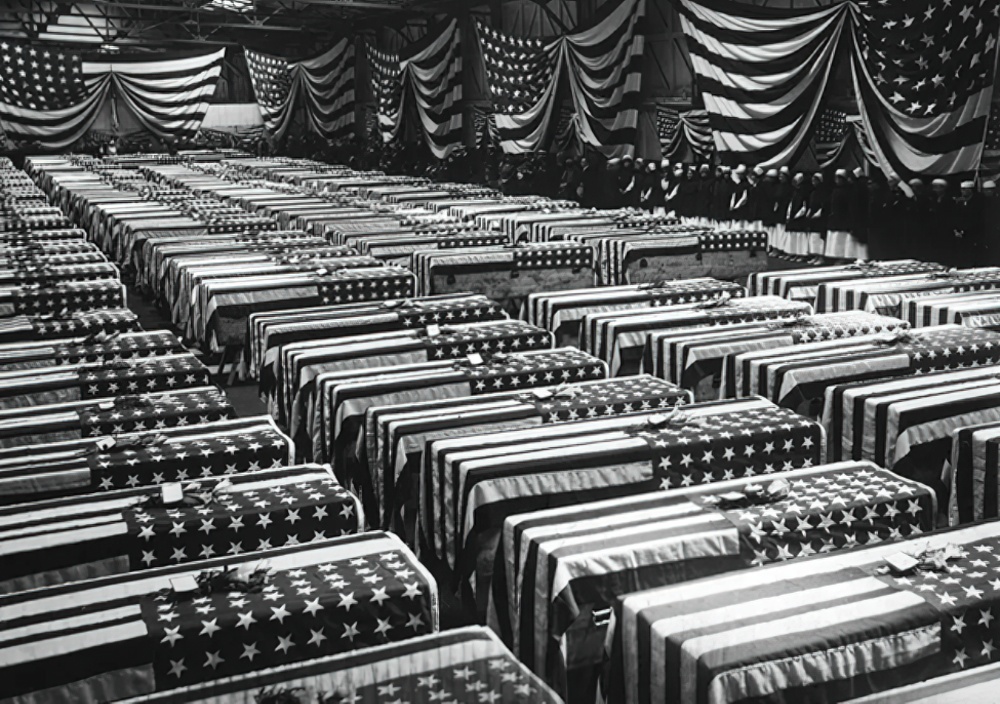
On the 11th hour of the 11th day of the 11th month in 1918, the belligerent armies fighting World War I finally laid down their arms and stopped killing each other for the same pieces of blown-up mud they’d been fighting over since 1914.
The Origins of Veterans Day
The First World War killed as many as 22 million people worldwide and left some 23 million more wounded. An estimated 53,000 of those killed were American service members. Another 204,000 Americans would return home wounded.
World War I ushered in a new age of warfare: industrial and mechanical innovations killed, wounded, and maimed troops on the battlefield in ways previously unimaginable. Tanks, machine guns, and poison gas forever scarred the men in the trenches in ways they could never forget – and Americans back home took notice.
On the anniversary of the armistice, President Woodrow Wilson proclaimed the first commemoration of Armistice Day, saying:
“To us in America, the reflections of Armistice Day will be filled with solemn pride in the heroism of those who died in the country’s service and with gratitude for the victory, both because of the thing from which it has freed us and because of the opportunity it has given America to show her sympathy with peace and justice in the councils of the nations.”
From Armistice Day to Veterans Day
From that day until 1926, Armistice Day became a day Americans recognized unofficially, closing shops at 11 a.m. so people could line the streets for parades, public meetings, and prayer. By 1926, 27 states had already recognized the day as a holiday, so Congress decided to call it Armistice Day for the entire country. In 1938, November 11th became an official public holiday.

But “The War to End All Wars” didn’t end any wars. It was just a prelude to World War II, the largest and costliest war in human history, in terms of both money and lives spent fighting it. World War II didn’t end wars, either. After the Allies defeated the Axis Powers, the Cold War began, and in 1950, its first battles were fought on the Korean Peninsula. The United States, less than 40 years after the end of World War I, was suddenly filled with millions of war veterans, all of whom had fought for American freedoms and ideals.
The National Recognition of Veterans Day
In 1954, a year after the end of the Korean War, veteran service organizations lobbied Congress to amend the Act of 1938 to change “Armistice Day” to “Veterans Day” and make November 11th a day to honor all veterans.

“I have today signed a proclamation calling upon all of our citizens to observe Thursday, November 11, 1954, as Veterans Day,” President Dwight D. Eisenhower wrote in a letter to the administrator of Veterans Affairs. “It is my earnest hope that all veterans, their organizations, and the entire citizenry will join hands to ensure [sic] proper and widespread observance of this day.”
So it was not until 1968 that President Richard Nixon signed the Uniform Holiday Bill, which intended to create three-day weekends for federal employees by moving four holidays to Mondays: Washington’s Birthday, Memorial Day, Veterans Day, and Columbus Day. The first Veterans Day under this bill was celebrated on October 25, 1971, but it was short-lived. Most states didn’t recognize the new day, and the historical significance of the day was overwhelming.
In 1975, President Gerald Ford signed a law to return Veterans Day to November 11th, beginning in 1978, where it has remained ever since.
Read About Other Military Myths and Legends
If you enjoyed learning “How Armistice Day Became Veterans Day”, we invite you to read about other military myths and legends on our blog. You will also find military book reviews, veterans’ service reflections, famous military units and more on the TogetherWeServed.com blog. If you are a veteran, find your military buddies, view historic boot camp photos, build a printable military service plaque, and more on TogetherWeServed.com today.

0 Comments